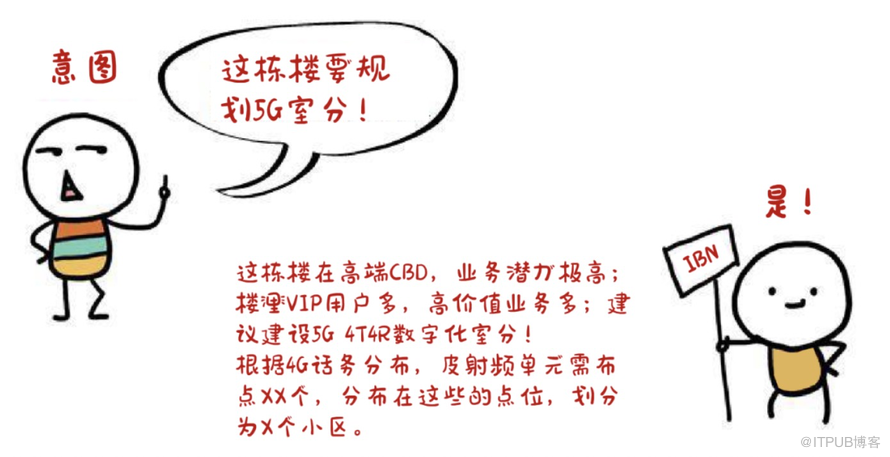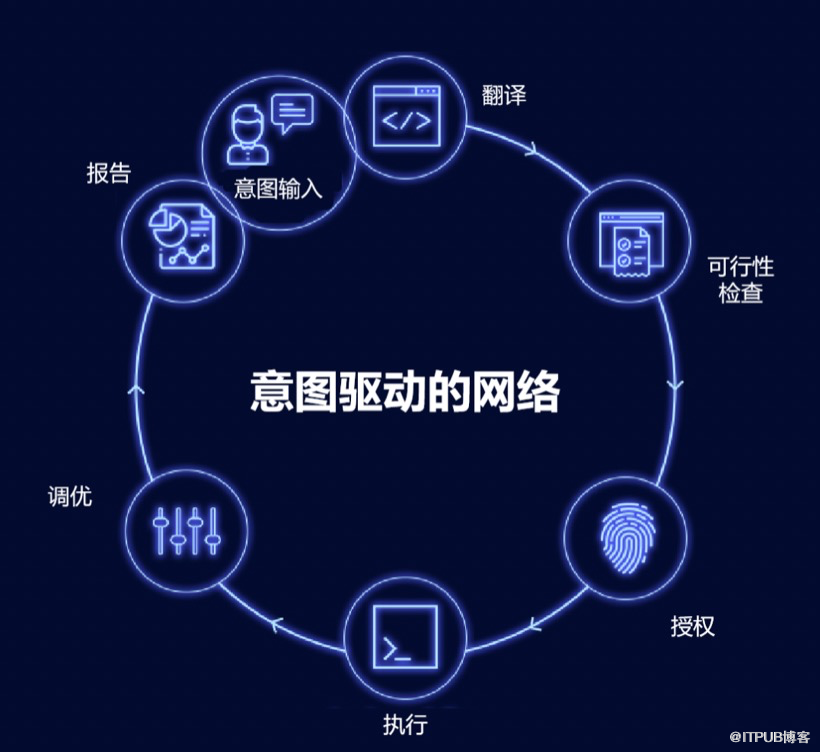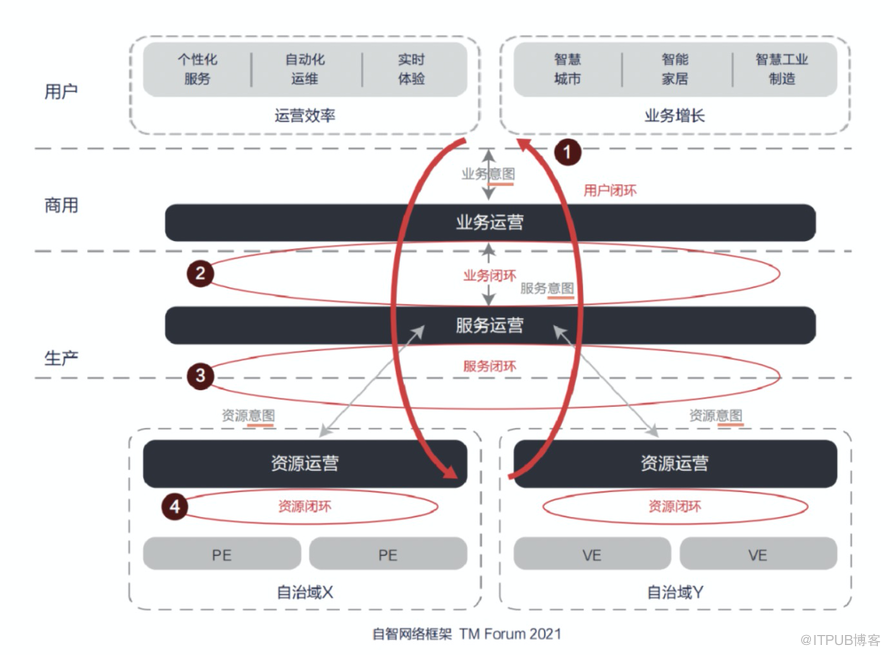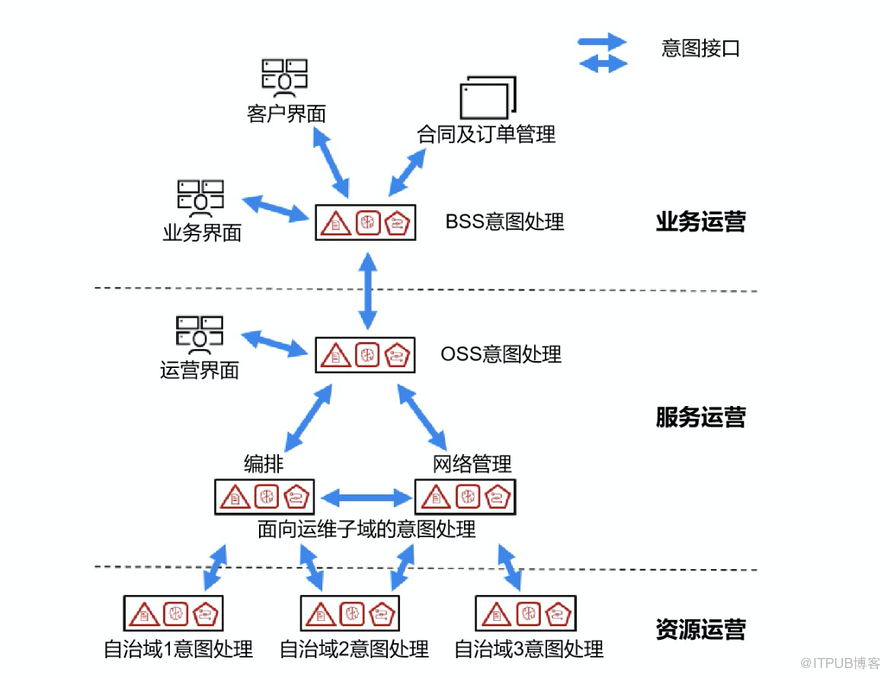Self-intelligent network, intent-driven?

Hello everyone, I'm Mayfly-kun. In this issue, we discuss the "intent-driven" self-intelligence network.
Before we start, let's take a look at the story of Sun Dasheng's weapon - Ruyi Golden Hoop in Journey to the West.
Well, this is the beginning.
"Ruyi" Gold Hoop
Wukong looked up at the 13,500-pound Dinghaishen Zhentie, which was thick and heavy.
As soon as the words were over, the artifact actually became smaller and lighter. Wukong is overjoyed: Lighter, smaller!
In the end, the "Dinghaishen Zhentie" standing on the bottom of the sea turned into a "ruyi golden hoop rod" that killed all directions, and it could also be turned into an embroidery needle and placed in the ear when not in use.
Yes, the golden hoop is like having intelligence, it can give orders to it, no need to indicate any details. The performance of Ruyi Golden Hoop has never disappointed Wukong.
The meaning of "intent-driven" to the self-intellectual network is similar to the meaning of the Ruyi golden hoop stick to Wukong.
What can "intent-based networking" do?
In the field of communication, the concept of self-intelligent network has emerged in recent years: the network is highly autonomous and intelligent, and can self-plan, self-deploy, self-optimize, and self-evolve.
In the self-intellectual network, people only need to tell the network their intentions, the network will independently formulate the optimal plan and perform tasks automatically, and people only need to accept the results at the end. This is called "intent-driven", and a network with such capabilities is naturally called "Intent Based Networking (IBN)".

For example, users in a building recently complained that the 5G signal is poor and the network speed is slow. It seems that the construction of indoor coverage must be promoted.
So you shouted and issued instructions in the background of the network: I want to build a 5G room sub-system in this building, come up with a plan! After that, you only need to light a cigarette, watch a video, and wait for the planning result.
At this time, the network is very busy.
It must fully consider the following questions: Where is the building located, how many VIP users are there? How much traffic is distributed among floors? Network planning must also be carried out in combination with the cost-effectiveness of various options.

Sure enough, after a bag of cigarettes, the report came out: It is recommended to upgrade the 4G room distribution system of the existing network to 5G, and then add digital room distribution in some hotspot areas. How many new equipment will be added in total? What is the expected coverage and capacity after the construction is completed? Everything is clear!
From the example above, we can see that with intent-based networking, everything will be so effortless. Let's take a look at how the industry specifically defines this concept.
Intent-Driven: The Foundation of the Self-Intelligent Network
The concept of "intent" was first introduced in 2015 by the IETF (Internet Engineering Task Force) in the context of SDN controllers.
The IETF defines intent as: "An abstract high-level strategy for operating a network".
This definition seemed a little vague, so the IETF patched it in 2020: "The set of operational objectives that the network should meet and the results the network should deliver, defined declaratively without specifying how realize or implement them".
Intent-driven, essentially reflecting the view of humans as external overseers of autonomous systems. They want the system to meet their needs. The system must meet their expectations, and intent is an expression of their needs.
If it is translated into the vernacular, it is: I want the network to be like this. And I don't care about the process, I only care about the result!
The concept of "intent-based networking" was proposed by Gartner in 2017.
In Gartner's official blog wrote: Intent-based networking is not a product, nor is it a market. It is a network software that helps in planning, designing and implementing/operating a network to increase network availability and agility.
Intent-based networking mainly consists of the following four parts:
1. Translation and Verification: The system takes the higher-level business policy from the end user and translates it into the necessary network configuration, generating and verifying the final design and configuration for correctness.
Human words are: what to do? How to do it? Understand!
2. Automated implementation: The system can configure appropriate network changes on the existing network infrastructure through network automation or network orchestration.
Speaking of human words is: moving bricks, efficient automatic brick moving!
3. Network status awareness: The system obtains the real-time network status under its management control.
Speaking of people's words is: assess how well this job is done, and can it be handed over?
4. Assurance and automated optimization/remediation: The system continuously verifies that the original business intent was achieved and can take corrective action if the desired intent is not achieved.
In human words, it is: rework and make small repairs, if it really fails, it will be a showdown.

As can be seen from the above four points, intent is the starting point and the end point of various operations in the network.
According to relevant research reports, the deployment of intent-based networks can reduce the delivery time of network infrastructure by 50%-90%, and at the same time reduce the number and duration of downtime by at least 50%, greatly improving network availability and agility .
It can be seen that the industry is full of confidence in this.
As we all know, with the introduction of 5G, multi-frequency and multi-standard make the network more and more complex, various toC and toB services have different needs, a large number of different types of terminal access with different capabilities, planning, construction, maintenance, and excellent operations. requirements are extremely high.
If the network is completely operated manually, the efficiency is undoubtedly very low, and the quality of task completion depends largely on the ability and experience of personnel, and the probability of errors is high.
We take this a step further and use pre-written and tested scripts to automate running operations, which will undoubtedly bring a huge increase in efficiency.
But in this way, critical decision points are still reliant on human experience, as automated systems have absolutely no idea what to do when they encounter problems and must be upgraded for human support.
The reason why we strive for network autonomy is to remove the dependence of network operation on human resources to the greatest extent possible. To achieve network autonomy, it must be intelligent enough to actively solve problems and optimize solutions according to the principle of maximizing utility.
At this point, the network has become a black box. We cannot perform micro-operations over and over again. We don’t need to figure out how each parameter in the network is configured, and we don’t need to spend a lot of effort to analyze whether the network indicators satisfy users. We just need to clearly express our intentions to the network, and the network will take care of the rest.
In other words, in the self-intellectual network, intention is the natural way of interaction between humans and machines, and between machines and machines, and it is also the most efficient way of interaction. The intent-based network shields the underlying technical complexity of the network, not only allows operation and maintenance personnel to focus on the value of the network itself, but also makes the interaction between various business domains simpler.

As can be seen from the above figure, the information interaction between different domains and different layers of the self-intellectual network is all intention-driven. Service operations issue orders to resource operations through resource intentions; business operations issue demands to service operations in the form of service intentions; end users realize their own demands by expressing business intentions to business operations.

TM Forum: Intent in the Self-Intelligent Network
"Intent-driven" is essentially a conceptual innovation of network governance. It is built on artificial intelligence and is the basis of self-intelligence networks.
Human-machine interfaces for intention input generally use voice or text input, which first requires an important branch of traditional artificial intelligence: natural language understanding. After that, key actions such as intelligent orchestration of network resources, troubleshooting of network management, and optimization of network performance all require the participation of big data and artificial intelligence algorithms.
In this golden age of artificial intelligence development, "intent" will surely drive the self-intellectual network to shine, allowing the network to move with "will" and empower the Quartet like a wishful golden hoop.